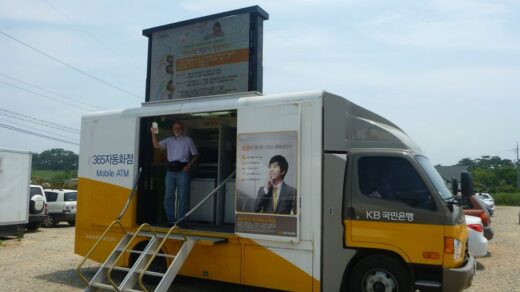I frequently translate Korean emails and other documents to be used in litigation. These generally come to me during the discovery phase before trial while the attorneys for the non-Korean side are preparing their case using materials obtained from the opposing Korean party.
In these situations, the attorneys are interested in knowing exactly what the Korean says, not more and not less. Therefore, I put the highest priority on correctness and completeness and only focus on style and smooth readability after achieving a precise translation.
In other words, I make it my goal to help the end client understand through my English translation exactly what the Korean says. As much as possible, I seek to convey source meaning and tone, as well as errors, redundancies, and even punctuation mistakes. If it's not pretty in the source, then I don't make it pretty in the translation.
Respect and Formality
Of course, there are limits here. As I've explained before, it's virtually impossible to translate all of the elements of formality and respect into English from a Korean source document (see "To My Esteemed Reader"). Still, I am not without tools for communicating these aspects. While I can't use a humble form of the pronouns "I" and "we", insert honorific tags into the English sentences, or even change verb endings to indicate formality, I can communicate these nuances with terminology and phrasing.
In a highly formal Korean business email exchange (and Korean business communications are generally conducted with greater formality than American ones), I retain the addressing of individuals in Korean by their titles by using corresponding English job titles, rather than first names. (Even "Mr. So-and-So" without a job title isn't quite the same in English as it is in Korean.)
I also choose phrasings like "I hereby send you the attachment", rather than "Here's the attachment" or "I'm sending an attachment." Oftentimes, Korean terms and phrasings translate most directly into expressions we might consider a bit difficult in English, so that "I am sorry for our results which are not commensurate with the efforts you've made on our behalf" may be a truer reflection of the original Korean meaning AND help to communicate formality more effectively than "I'm sorry for not delivering the results you deserve."
Gender, Pronouns and Plural/Singular
There are other ways that an English translation can't always convey the Korean perfectly. Korean doesn't indicate gender as often as we do in English (such as by using he/she pronouns) and it often leaves out plurals (see "Korean Has a Plural Form; It Just Doesn't Get Used Much"). If it's possible to grasp these from context, I use the correct gender or singular/plural in English. If I don't know and it's not that important, I sometimes just choose one or the other and use that. But if it's not possible to know but choosing one or the other could be misleading to the reader, I occasionally phrase things a bit awkwardly to avoid creating confusion (ex: "Please send him/her the document(s)." or "Please send document to the person".) Note how the second example is even slightly incorrect grammatically; if it's a choice between correctness or grammar, I choose correctness.
One exception to the pronoun usage rule is that I don't translate 우리 or 저희 to "we" when these are used in the common sense for "our country" (우리나라) or "our wife" (저희 와이프). These are usually best translated as "Korea" or "my wife" without changing the writer's meaning and intent (see "Koreans Are All About 'We'").
Consistency with Existing English in the Source
Another issue that comes up is consistency with English in a document. What do you do when a Korean's job title in an email clearly corresponds to a certain English title (ex: 전무 > Managing Director) but — and Korean companies do this ALL THE TIME — the email footer includes an English title that's inflated (ex: 전무 > Vice President), presumably so that recipients of his English emails will think he's more important than he really is? The best approach for this is to translate the Korean correctly and then provide a separate explanation somewhere to the client about the situation.
If the source document has English words interspersed in the Korean and they are misspelled or used incorrectly, I generally spell them correctly or correct the usage in my translation if it's clear what was intended.
Punctuation
Punctuation can be an issue, too. As mentioned above, I try to reproduce incorrect punctuation. However, if the punctuation in Korean is not wrong, just different because that's the way Koreans like to do it, such as by adding a space before colons (see "A Quirk of Punctuation Usage in Korean") and not adding periods correctly around acronyms (see "Koreans See Punctuation of Acronyms from a Different Perspective"), I go ahead and use accepted English punctuation. I also change Korean-style smileys to English ones (see "Koreans Smile Differently When Writing") and tildes to dashes (see "Korean, English, Tildes and Dashes").
Cultural Adaptation
As for Korean political correctness or cultural sensitivity, I make no effort to soften things or depart from what the source says. If it's offensive or emotional in the source, the attorney need to understand the intended impact. Sometimes this can require an extra translator's note, such as explaining that an untranslatable change in the level of respect in the Korean source was intended to offend.
There are a number of set Korean expressions commonly found in Korean emails. Not only do Koreans continuously exhort each other to work hard and suffer more (rather than to take it easy – see "Koreans Work Harder Than Anybody"), but they also have a standard opening greeting that ends in a question mark… or doesn't (see "Is the Standard Korean Greeting a Question or Not?"). At the end of messages or reports, Koreans often write "The End", even though we wouldn't normally do so in English. I don't change the "work hard" phrasing to "take it easy" and I certainly include "The End" if it's in the source. For the standard greeting, I've lately taken to translating it as "How are you?" when the writer uses a question mark and "Hello" otherwise. Though both versions are actually the same, at least this helps to match punctuation, and it doesn't change the intent of meaning at all.
Conclusion
Unfortunately, it's not always easy for a non-Korean client to evaluate the quality of a job translated using this precise approach. In fact, if I go out of my way to convey flaws (such as by including superfluous punctuation) or bad writing style (redundant phrasings, run-on sentences, etc.) of the Korean source in my English translation, the client could easily think I was careless and judge my exceptionally good translation as inferior to one where the translator has smoothed things over.
What can be done about this?
That's what this article is about.
If you're reading this, it may be because I forwarded you the link before starting a job or with a delivery. If you come across things in the translation that seems odd, ask me about it; don't assume it was a mistake. If you don't like the writing style, ask me why I expressed things the way I did. I do check my work and, while I do make occasional mistakes, I don't make many, and flaws or awkward phrasings and terminology in the translation are probably there by design to help you/your client's attorneys know EXACTLY what the Korean documents I translated say.



